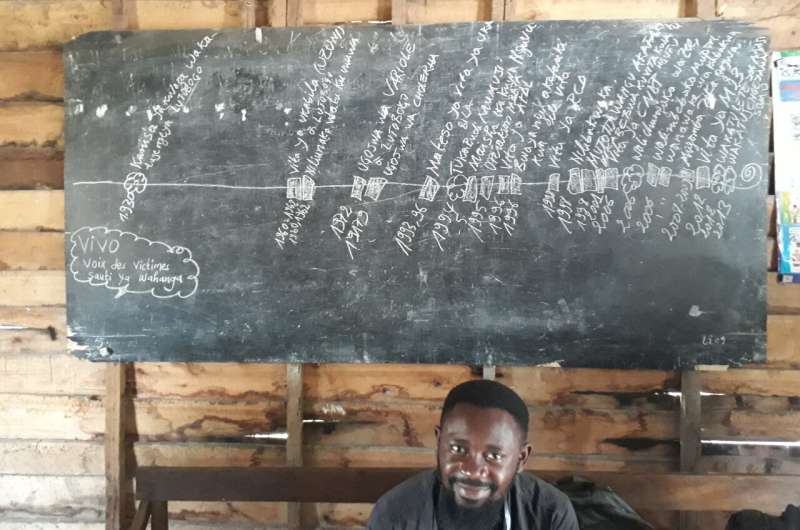Stabilizing traumatized communities using Narrative Exposure Therapy to contextualize suffering

War and violence have a psychological impact on everyone involved. Victims of organized, sexual, and domestic violence are scarred by these traumas for the rest of their lives. For many of them it is difficult to live a normal life afterwards. Current wars in Europe and around the world make the effective treatment of trauma all the more important.
About 15 years ago, the trauma researchers Maggie Schauer, Frank Neuner and Thomas Elbert from Konstanz developed Narrative Exposure Therapy (NET): a successful form of therapy for severe trauma, which can be implemented in crisis areas. NET supports the affected persons in naming the traumatic experience, contextualizing it in terms of a time period in a particular location, processing the emotions and integrating the event into the overall biography. At the same time, the person and their biography are treated with dignity.
From NET to NETfacts
Based on Narrative Exposure Therapy, a team of psychologists and conflict researchers from the University of Konstanz has now developed the therapy system NETfacts in cooperation with the aid organization "vivo international." Complementing Narrative Exposure Therapy, which focuses on the individual, NETfacts involves the community in which the traumatic event took place.
But why is it important to include the social environment? "Often, the victims are blamed. Even subtle stigmatization of the victims makes them feel worse and blocks them from coming to terms with their trauma," describes Anke Köbach, a psychologist from Konstanz who, together with Katy Robjant from "vivo international," was instrumental in developing the NETfacts system.
One example of such stigmatization is rape myths, which are attempts to trivialize sexual violence or blame the victim. "Keeping silent about the violence you have experienced, not acknowledging the horror, only leads to more violence," Köbach says. "We need the social environment in order to change the norms and acknowledge victims' histories. This is why NETfacts targets the community. "
Applying NETfacts
NETfacts combines individual treatment with a collective process. All individuals in the community are first screened for signs of posttraumatic stress disorder or significant aggressive behavior. Affected individuals are each offered treatment with Narrative Exposure Therapy.
At the same time, the community members work through the history of their shared traumatic events—for example, a (para)military raid of their village—from different perspectives. Using symbolic objects such as flowers and stones (for positive and negative experiences), they visualize the community's "lifeline" and develop a unified understanding with a focus on the traumatic events.
In combination with the detailed NET trauma narratives, this sheds light on the events and makes them explicitly visible; the "collective memory" of the community is supplemented with the personal experiences of its members. On the one hand, this helps everyone in the community to come to terms with the traumatic event and acknowledge it as part of the community's history. On the other hand, it challenges harmful narratives such as stigmatization and rape myths.
Field study and results
In a field study with a total of 1,066 persons, NETfacts was used in six war-ridden communities in the Democratic Republic of Congo and compared with results from the classic NET program. The study was recently published in Proceedings of the National Academy of Sciences. The results show that both NET and NETfacts were able to significantly reduce the severity of posttraumatic stress disorder and depression in all cases.
"In addition to this, after NETfacts, rape myths and other stigmatizations of victims were accepted much less," Anke Köbach says. "The most important finding of our study is that as these norms change, violence decreases—both emotional and physical violence."
More information: Katy Robjant et al, NETfacts: An integrated intervention at the individual and collective level to treat communities affected by organized violence, Proceedings of the National Academy of Sciences (2022). DOI: 10.1073/pnas.2204698119




















